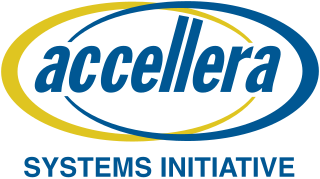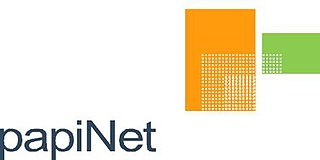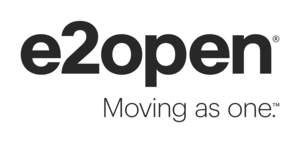Related Research Articles
E-commerce is the activity of electronically buying or selling products on online services or over the Internet. E-commerce draws on technologies such as mobile commerce, electronic funds transfer, supply chain management, Internet marketing, online transaction processing, electronic data interchange (EDI), inventory management systems, and automated data collection systems. E-commerce is the largest sector of the electronics industry and is in turn driven by the technological advances of the semiconductor industry.
Electronic data interchange (EDI) is the concept of businesses electronically communicating information that was traditionally communicated on paper, such as purchase orders, advance ship notices, and invoices. Technical standards for EDI exist to facilitate parties transacting such instruments without having to make special arrangements.
The Organization for the Advancement of Structured Information Standards is a nonprofit consortium that works on the development, convergence, and adoption of open standards for cybersecurity, blockchain, Internet of things (IoT), emergency management, cloud computing, legal data exchange, energy, content technologies, and other areas.
UN/CEFACT is the United Nations Centre for Trade Facilitation and Electronic Business. It was established as an intergovernmental body of the United Nations Economic Commission for Europe (UNECE) in 1996 and evolved from UNECE's long tradition of work in trade facilitation which began in 1957.

The Electronic Product Code (EPC) is designed as a universal identifier that provides a unique identity for every physical object anywhere in the world, for all time. The EPC structure is defined in the EPCglobal Tag Data Standard, which is a freely available standard. The canonical representation of an EPC is a URI, namely the 'pure-identity URI' representation that is intended for use when referring to a specific physical object in communications about EPCs among information systems and business application software.

Accellera Systems Initiative (Accellera) is a standards organization that supports a mix of user and vendor standards and open interfaces development in the area of electronic design automation (EDA) and integrated circuit (IC) design and manufacturing. It is less constrained than the Institute of Electrical and Electronics Engineers (IEEE) and is therefore the starting place for many standards. Once mature and adopted by the broader community, the standards are usually transferred to the IEEE.
An invoice, bill or tab is a commercial document issued by a seller to a buyer relating to a sale transaction and indicating the products, quantities, and agreed-upon prices for products or services the seller had provided the buyer.
Microsoft BizTalk Server is an inter-organizational middleware system (IOMS) that automates business processes through the use of adapters which are tailored to communicate with different software systems used in an enterprise. Created by Microsoft, it provides enterprise application integration, business process automation, business-to-business communication, message broker and business activity monitoring.

GS1 is a not-for-profit, international organization developing and maintaining its own standards for barcodes and the corresponding issue company prefixes. The best known of these standards is the barcode, a symbol printed on products that can be scanned electronically.
Electronic Product Code Information Services (EPCIS) is a global GS1 Standard for creating and sharing visibility event data, both within and across enterprises, to enable users to gain a shared view of physical or digital objects within a relevant business context. "Objects" in the context of EPCIS typically refers to physical objects that are handled in physical steps of an overall business process involving one or more organizations. Examples of such physical objects include trade items (products), logistic units, returnable assets, fixed assets, physical documents, etc. “Objects” may also refer to digital objects which participate in comparable business process steps. Examples of such digital objects include digital trade items, digital documents, and so forth.
Business-to-Business (B2B) Gateways integrate data from back-end systems, enabling information exchange across trading partners. B2B Gateways also provide a centralized point for transformation of multiple data sources through interoperability standards such as XML, cXML(Commerce XML) and EDI. B2B Gateways provide businesses an e-commerce platform for integrating with key suppliers and customers quickly and easily. The platform is often a component of a company's Service-Oriented Architecture (SOA) architecture. Other capabilities of the B2B Gateway include trading partner management and security control. B2B Gateways help to bridge the collaboration gap across the supply chain partners and transform the data flow between companies from a batch oriented manner into a real time process. This streamlines the processing and enables for business activity monitoring(BAM) systems to be implemented, which provides the enterprise with greater visibility and proactive control over the applications. B2B Gateways continue to be in high demand for organizations of every size.
Supplier enablement is the process of electronically connecting suppliers to a company's supply chain. Supplier enablement is achieved when suppliers of goods and services are connected to a company's back-office systems to exchange critical business documents such as purchase orders, invoices and other information. Suppliers can be connected, or "enabled," using a variety of means including Electronic Data Interchange (EDI), Extensible Markup Language (XML), Web forms, RFID chips, or other e-commerce tools.

papiNet is a global communication XML standard for the paper and forest products industries. papiNet facilitates the automation of the business processes within the industry, making it easier for the business partners to agree on data definitions and formats.
Mobile tagging is the process of providing data read from tags for display on mobile devices, commonly encoded in a two-dimensional barcode, using the camera of a camera phone as the reader device. The contents of the tag code is usually a URL for information addressed and accessible through Internet.

e2open, LLC is a business-to-business provider of cloud-based, on-demand software for supply chains for computer, telecom and electronics systems, components and services. The company was founded in 2000 as a joint project of 8 major companies: Hitachi, IBM, LG Electronics, Matsushita, Nortel, Seagate, Solectron, and Toshiba.
Electronic Business using eXtensible Markup Language, commonly known as e-business XML, or ebXML as it is typically referred to, is a family of XML based standards sponsored by OASIS and UN/CEFACT whose mission is to provide an open, XML-based infrastructure that enables the global use of electronic business information in an interoperable, secure, and consistent manner by all trading partners.
In computing, a data definition specification (DDS) is a guideline to ensure comprehensive and consistent data definition. It represents the attributes required to quantify data definition. A comprehensive data definition specification encompasses enterprise data, the hierarchy of data management, prescribed guidance enforcement and criteria to determine compliance.
Electronic invoicing is a form of electronic billing. E-invoicing includes a number of different technologies and entry options, and is usually used as an umbrella term to describe any method by which a document is electronically presented from one party to another, either for payment or to present and monitor transactional documents between trade partners to ensure the terms of their trading agreements are being met. These documents can include invoices, purchase orders, debit notes, credit notes, payment terms, payment instructions, and remittance slips.
GS1 EDI is a set of global electronic messaging standards for business documents used in Electronic Data Interchange (EDI). The standards are developed and maintained by GS1. GS1 EDI is part of the overall GS1 system, fully integrated with other GS1 standards, increasing the speed and accuracy of the supply chain. Examples of GS1 EDI standards include messages such as: Order, Despatch Advice, Invoice, Transport Instruction, etc. The development and maintenance of all GS1 standards is based on a rigorous process called the Global Standard Management Process (GSMP). GS1 develops its global supply chain standards in partnership with the industries using them. Any organization can submit a request to modify the standard. Maintenance releases of GS1 EDI standards are typically published every two years, while code lists can be updated up to 4 times a year.
References
- ↑ Adams, Susie; Hardas, Dilip; Iossein, Aktar & Kaiman, Charles (2002). BizTalk Unleashed. Indianapolis, Indiana: Sams Publishing. p. 966. ISBN 978-0-672-32176-4.
- ↑ Boh, W. F; C. Soh; S. Yeo (2007). "Standards development and diffusion: a case study of RosettaNet". Communications of the ACM. 50 (12): 57–62. doi:10.1145/1323688.1323695. hdl: 10220/17816 . S2CID 10374062.
- ↑ Jesdanun, Anick (23 June 2012). "Internet group picks little-known executive as CEO". The Austin Statesman. Austin, Texas. Archived from the original on 23 June 2012.
- ↑ an international open document standard called ECMA Open XMLLin, Woon Wu (June 2007). "RosettaNet Malaysia introduces new biz standard for local SMIs". Archived from the original on 25 October 2007.
- ↑ RosettaNet (12 September 2007). "Purpose". RosettaNet.